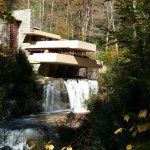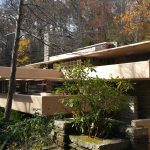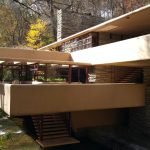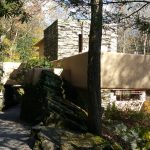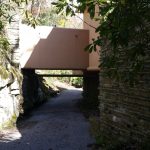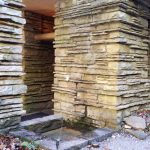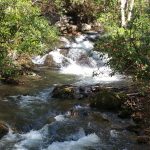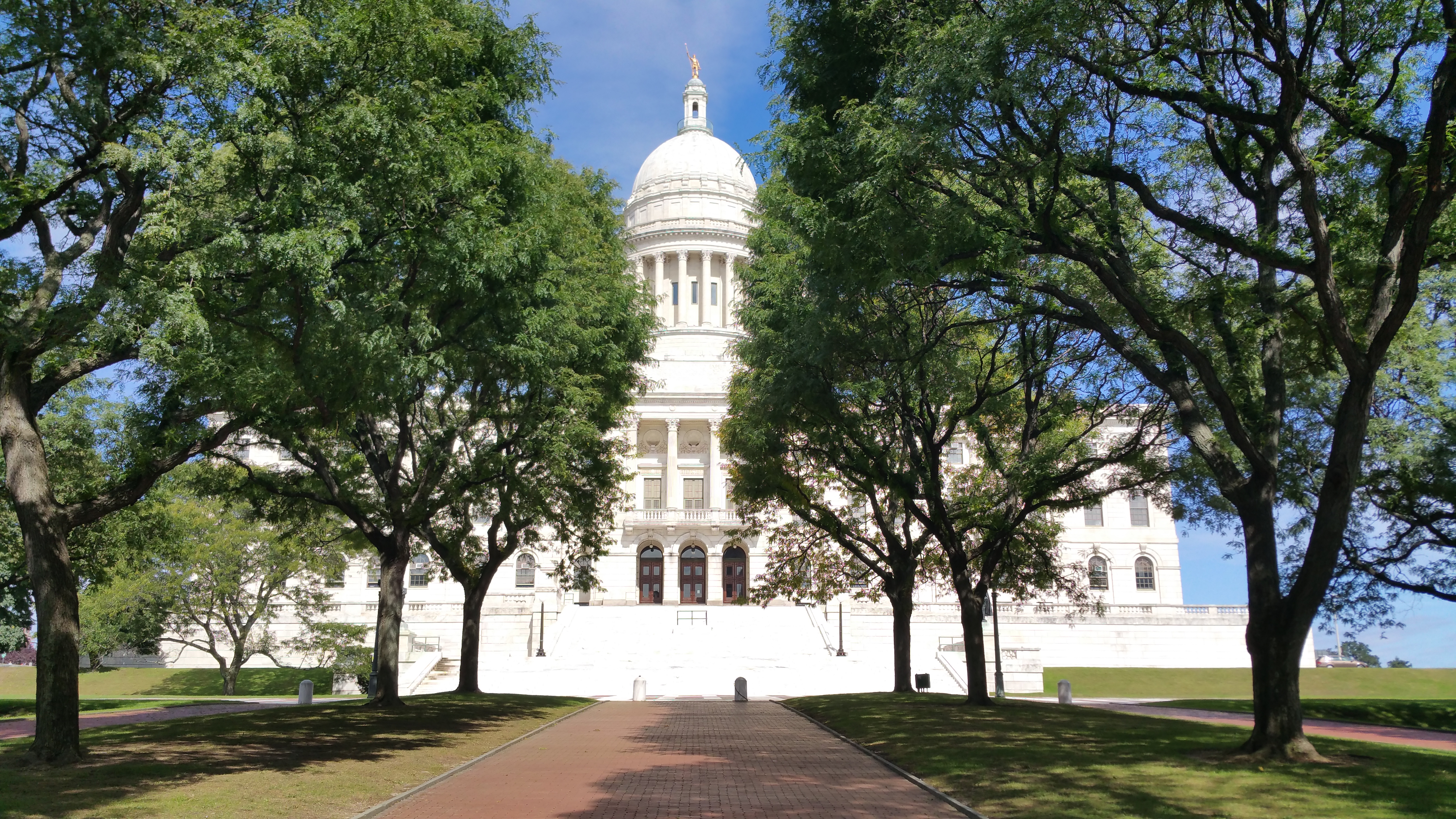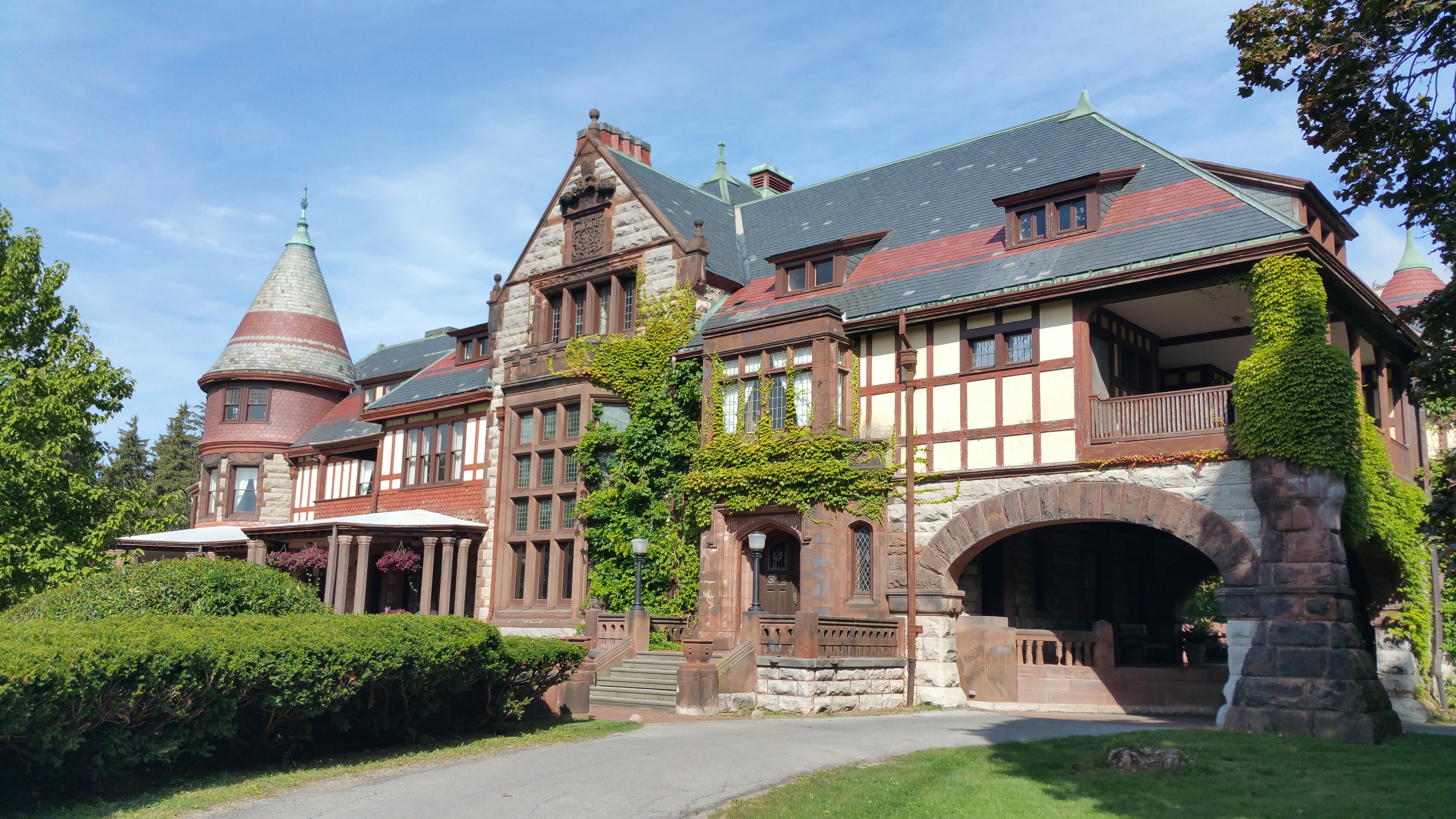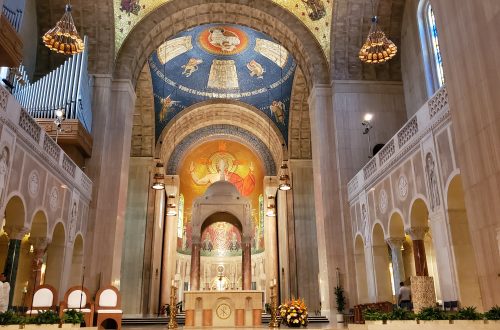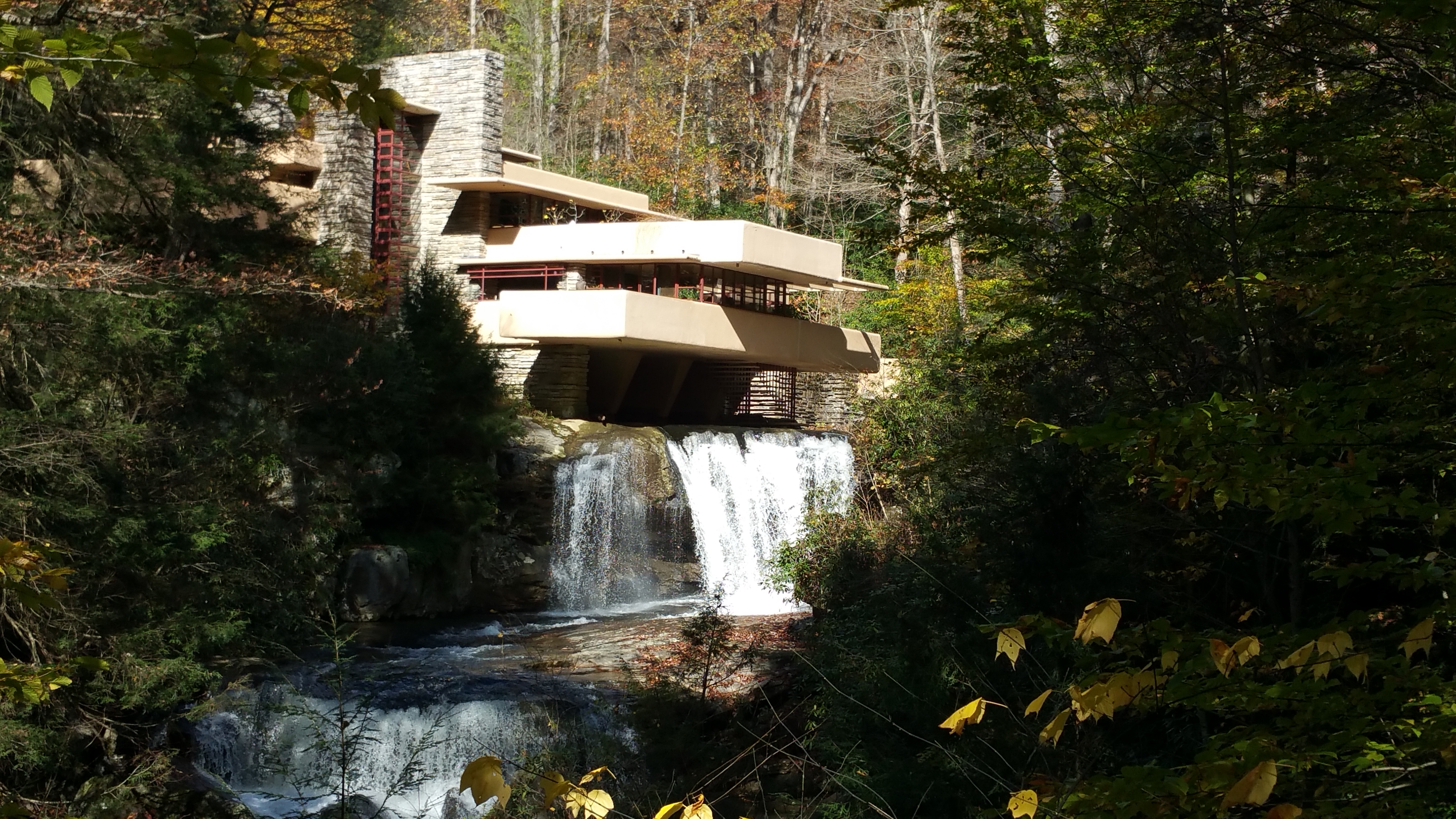
Fallingwater- Mill Run, PA
For any true fan of Frank Lloyd Wright’s work, a trip to Fallingwater is a required pilgrimage. With good reason; it is an absolute masterpiece. Perhaps the best known of all his works, this fanciful house is a virtual showcase of Wright’s hallmark design details, in the extreme. Far different from his practical Usonians, it’s a one of a kind wonder.
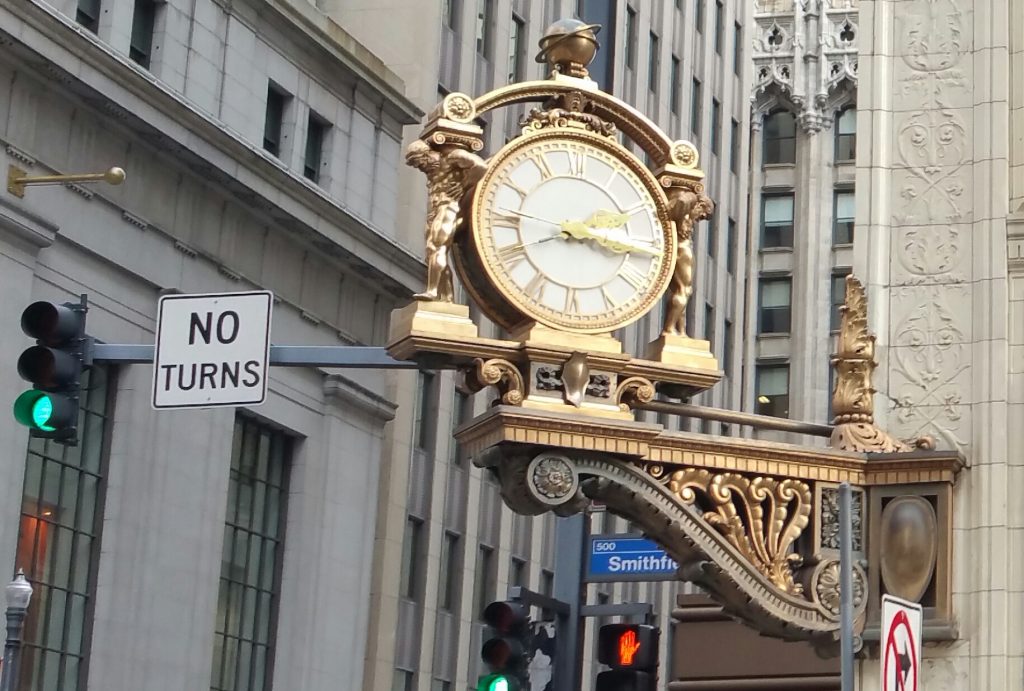
The story of Fallingwater starts with a fortune of course, because a house of that stature takes money to build. In this case, it goes back to Pittsburgh, and a department store called Kaufmann’s. Established in 1871 by Jacob and Issac Kaufmann, the eponymous business was later taken over by nephew Edgar J. Kaufmann. The business flourished under Edgar’s leadership, with sales tripling in the years following his arrival. During these early years, he married, had a son, and worked extensively on Pittsburgh philanthropic causes, including several New Deal public work programs in the 1930s. Through these projects Kaufmann was introduced to FLW’s work, but it would be through his son’s interest in architecture that Fallingwater would transpire.
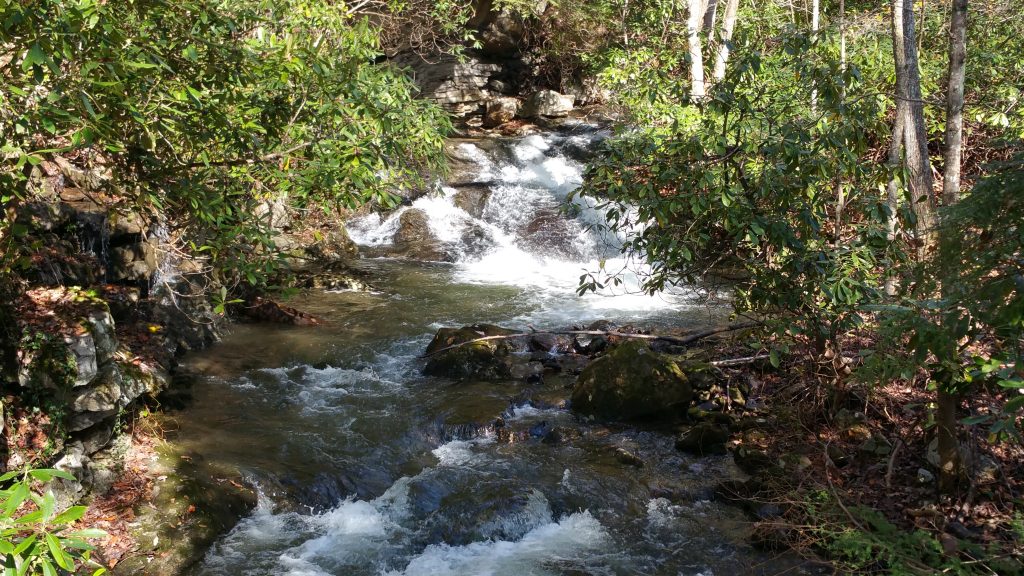
By the 1930s, Edgar Jonas Kaufmann’s only son, an artist, had finished schooling, and moved to Europe to study painting. Upon returning to the States, he happened to read Frank Lloyd Wright’s 1932 book, An Autobiography, and was so moved he immediately traveled to Wright’s home in Wisconsin to meet him. Because that is possible when you come from a prominent, wealthy family. Within three weeks, he started an apprenticeship at Taliesin. It was during a visit with their son there, in November of 1934, the elder Kaufmanns first met Wright; soon after this meeting, they asked him to design their weekend house along Bear Run in Pennsylvania’s Laurel Highlands. He agreed, and visited the property in December of 1934.
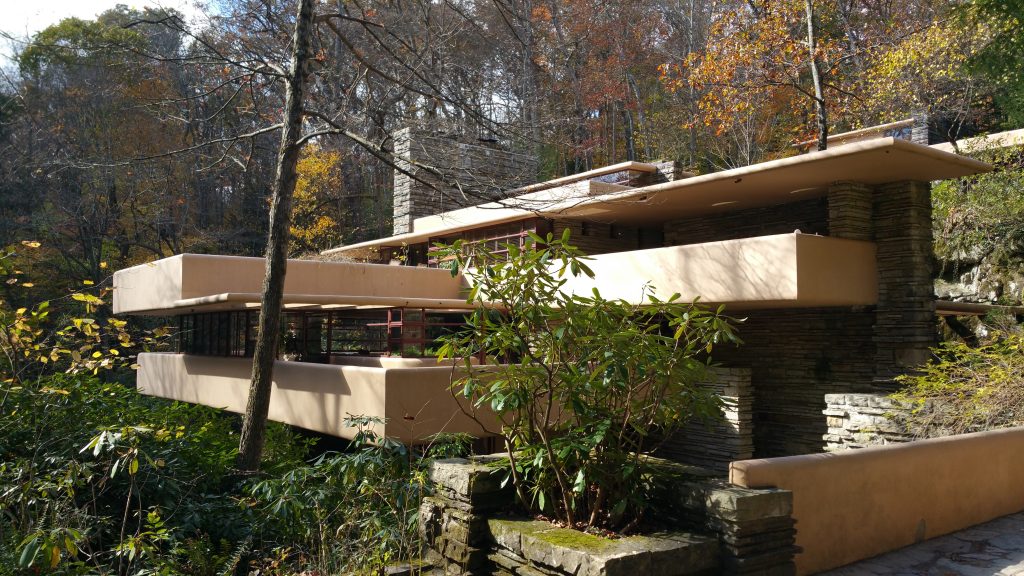
A remote forested area, accented by the tumbling water of Bear Run, the property was the perfect canvas for Wright’s non-intrusive, organic design aesthetic. The house would not dominate the land, but seemingly disappear into it; or perhaps subtly rise from it. Either way, it would do little to disturb the natural beauty of the land. Which he managed to do, despite locating the house atop the largest waterfall on Kaufmann’s property.
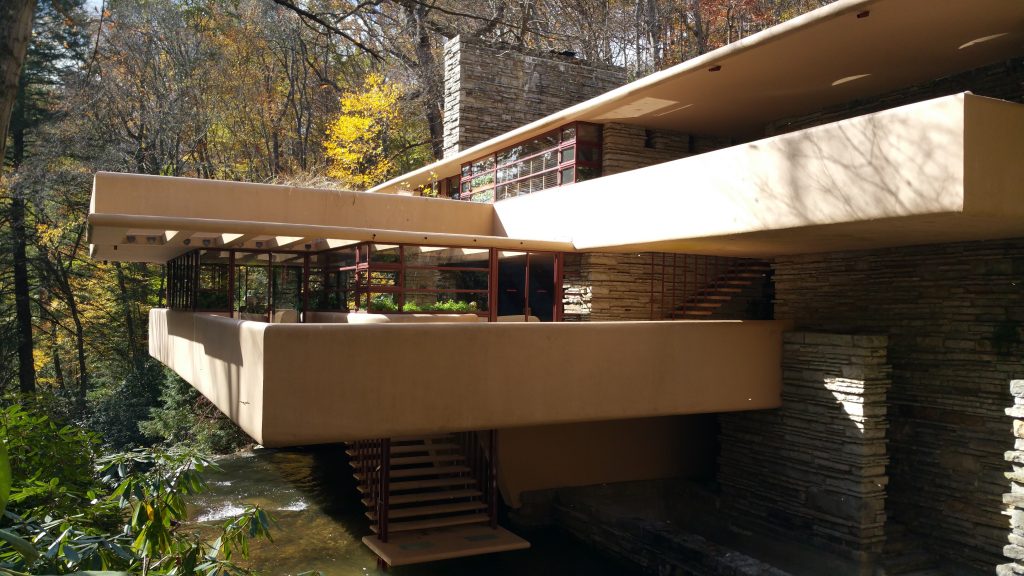
It is claimed by several Taliesin apprentices that the design itself was produced in a matter of hours. He took his cues from the surrounding geology, designing a home that mimicked the horizontal lines of the area’s rock ledges; in doing so, he created one of the world’s most famous cantilevers, a living room that extends over the falls. Each concrete level was centrally anchored to the homes massive central chimney, constructed of local Pottsville sandstone. The exterior walls themselves are largely glass, diminishing the boundary between inside and out. To further this effect, polished stones were used for the floor in the living room, which includes a rock protruding through the floor, creating the effect of a riverbed. A glass hatch leads down to the actual river below.
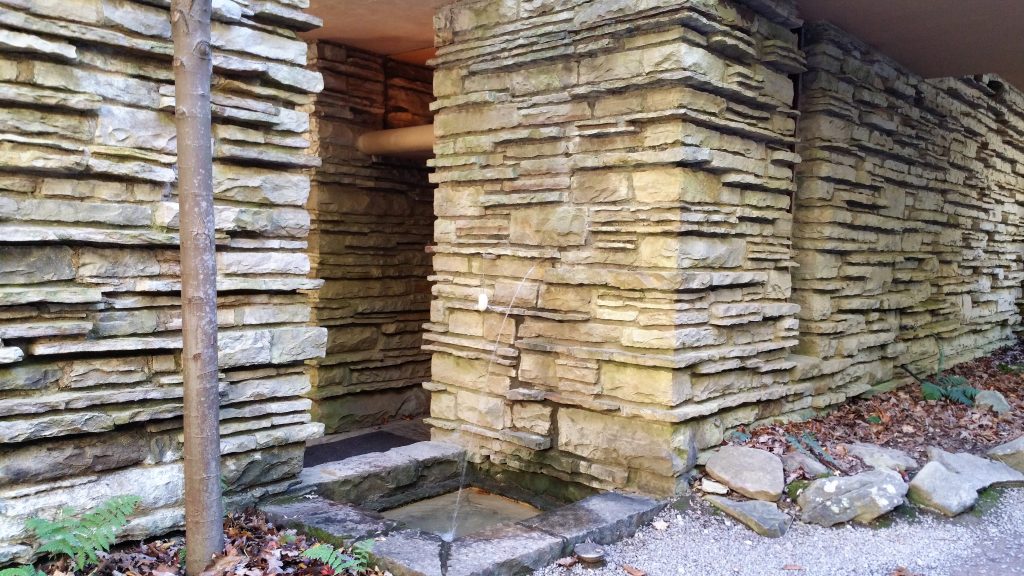
As expected, by completion in 1938, the project was wildly over budget. The original estimate for construction was $35,000. The final cost of the home, including Wright designed furniture, was $155,000. Considering this was a time most of the country was in the throws of a deep depression, it is a staggering amount. However, the Kaufmann’s were happy with their escape, as they should have been. They used the space to showcase their art collection, and frequently entertained friends and family at the weekend home. A guest residence was later constructed on the property, as well as a plunge pool.
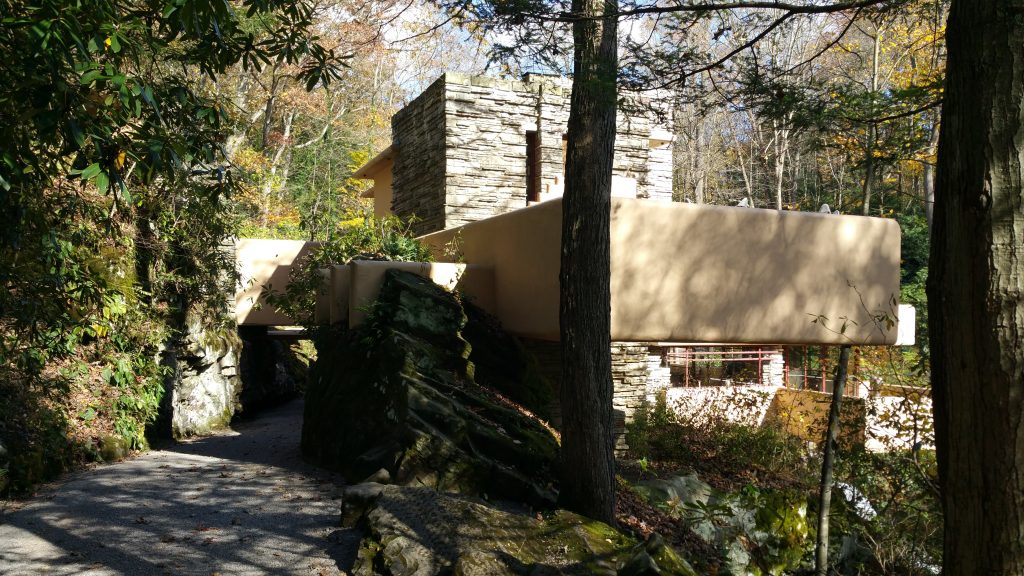
The house remained in the family until 1963, when Edgar Kaufmann, Jr. donated the property to the Western Pennsylvania Conservatory. A year later, the property was opened to the public, and saw over 29,792 visitors in its first season. That seems downright quaint by today’s figures. It is as popular as you would imagine, and you must plan in advance. Although there are several tours a day, they are frequently sold out. In addition, avoid the summer months and weekends, if possible. There are some small spaces in the house if you are on a large tour. No interior photography is allowed, which is disappointing, but understandable; however, the exterior is very photogenic, and almost makes up for it. Almost.
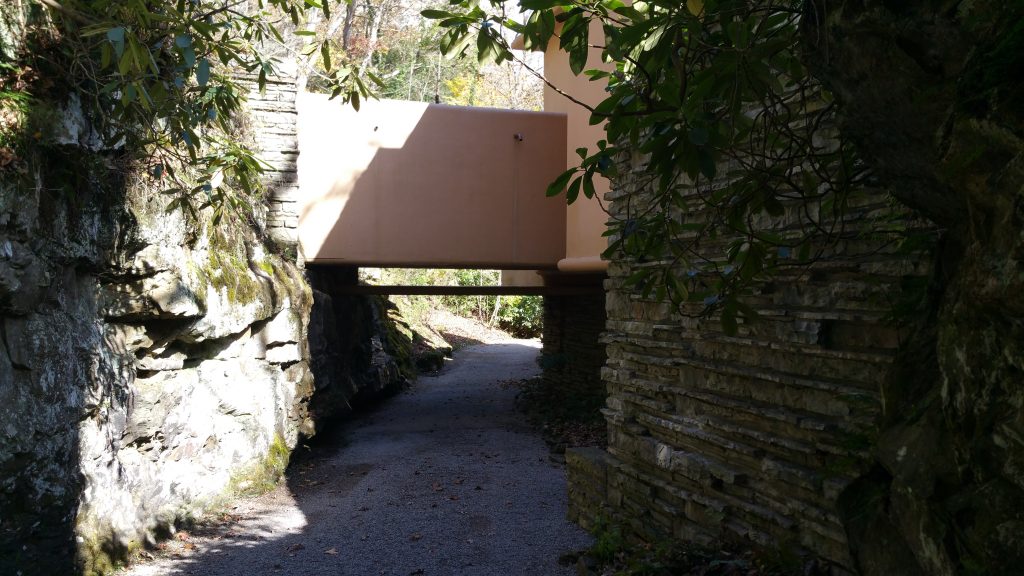
I love the intimate feel of the space; at 2885 interior square feet, it is much smaller than you might imagine. Of course, there is an additional 2445 square feet of terrace space, so it feels much larger. Admittedly, the decor can feel a bit dated, but the house itself is timeless. It is a wonderful, welcoming, organic space. I was lucky to tour it on a very quiet day, with a very small group. In fact, we did not encounter another tour inside, which apparently is almost unheard of. Aim to visit early in the day, between the end of the summer and leaf peeping season for the best experience. Winter will be slower, but you will miss the lush foliage, which adds to the experience.
